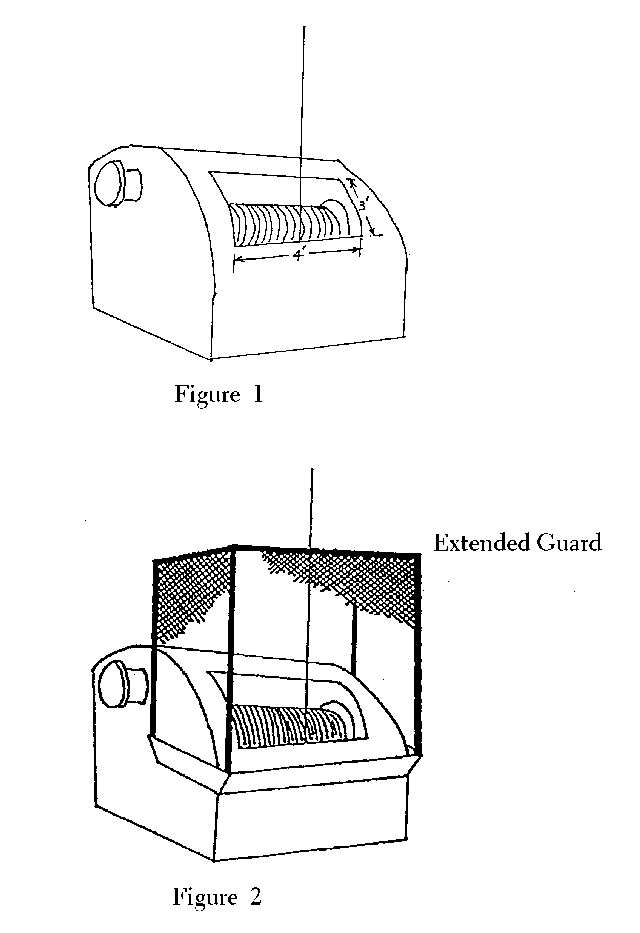OSHA Hazard Information Bulletins
July 13, 1995
| MEMORANDUM FOR: |
REGIONAL ADMINISTRATORS |
| THROUGH: |
JIMMY ROBERTS
Acting Director
Office of Field Programs |
| FROM: |
STEPHEN MALLINGER
Acting Director
Directorate of Technical Support |
| SUBJECT: |
Hazard Information Bulletin(1): Barrier Guard for
Drawworks Drum at Oil Drilling Sites |
________
FOOTNOTE(1) The Directorate of Technical Support issues Hazard
Information Bulletins (HIB) in accordance with OSHA Instruction CPL 2.65
to provide relevant information regarding unrecognized or misunderstood
health hazards, inadequacies of materials, devices, techniques, and safety
engineering controls. HIBs are initiated based on information provided by
the field staff, studies, and concerns expressed by safety and health
professionals, employers, and the public. Information is compiled based on a
thorough evaluation of available facts, and in coordination with the
appropriate parties.
The Bismarck Area Office recently investigated an oil drilling rig accident
caused by inadequate guarding of the drawworks drum. During an oil drilling
operation, the driller was in the process of raising the traveling block and
the attached kelly and swivel assembly. An air-chugger winch cable was
attached to the kelly pipe as a tag line to prevent it from swinging. Two of
the rig hands were monitoring the kelly pipe as it was pulled out of the rat
hole. The chain hand picked up the spinning chain and positioned himself
near the drawworks drum as he waited for the kelly to be positioned over the
hole. When he tossed the end of the spinning chain over his shoulder it
became entangled in the fast line cable as the cable was spooled onto the
drum. The spinning chain wrapped around the worker's wrist and pulled him
into the drum as the chain's slack was drawn up. The spinning chain also
struck the worker in the groin area and fractured his leg and severed his
femoral artery. The driller stopped the drawworks before the worker was
completely pulled into the drum encasement, but the worker was seriously
injured. His leg was amputated and injuries to his hand resulted in a
permanent disability.
The drawworks drum was equipped with metal casing that enclosed the drum on
the lower front, top, and sides. However, there was an opening of
approximately 4'x 3' to allow the fast line adequate clearances to spool back
and forth onto the drum that has no barrier guard. (See figure 1)
Apparently, the drawworks drums used on oil well drilling sites were
designed and constructed as described above without any barrier guard to
protect workers in close proximity to the drawworks drum from the hazard of
the ingoing nip point between the moving fast line and the drum. This design
also exposes the workers to the potential hazard of contacting the moving
fast line cable in the zone immediately above the drum casing.
To protect workers, a barrier guard or screens must be installed in front of
the drawworks drum or mounted on top of the existing drum casing to
effectively isolate the ingoing nip point hazard(2). (See figure 2) The
barrier or screen must be designed to eliminate any penetration by the
worker's body parts such as hands and fingers, as well as materials such as
chains or slings or any other object that could become entangled. The shield
should extend at least 7 feet above the working level and effectively isolate
all exposed sides. The guard should have features to allow for easy removal
to provide access during servicing or inspection operations. The guard must
be in place at all other times.
________
FOOTNOTE(2) OSHA's machine guarding standard, 29 CFR 1910.212(a)(1)
requires employers to ensure that "one or more methods of machine guarding
shall be provided to protect the operator and other employees in the machine
area from hazards such as those created by point of operation, ingoing nip
points, rotating parts, flying chips and sparks."
In addition to installing the barrier guard, all employers should inform
workers of the potential hazard described and implement work practices to
avoid the hazard of contacting moving parts such as hoist cables and rotating
drums.
Please distribute this bulletin to all Area Offices, State Plan States,
Consultation Projects and appropriate local labor and industry associations.
Attachment

Figure 1. Drawworks drum and Figure 2. Drawworks drum with extended guard.
|

